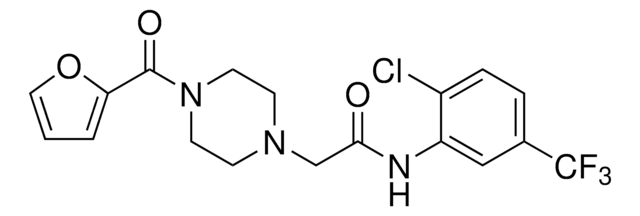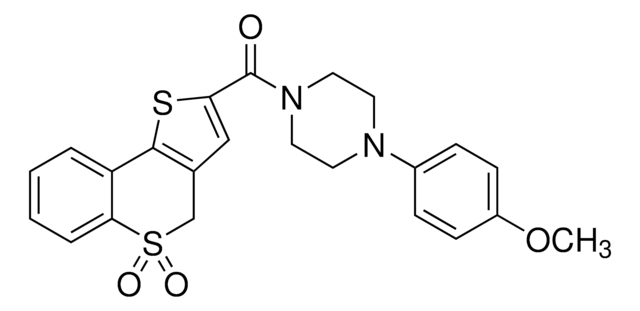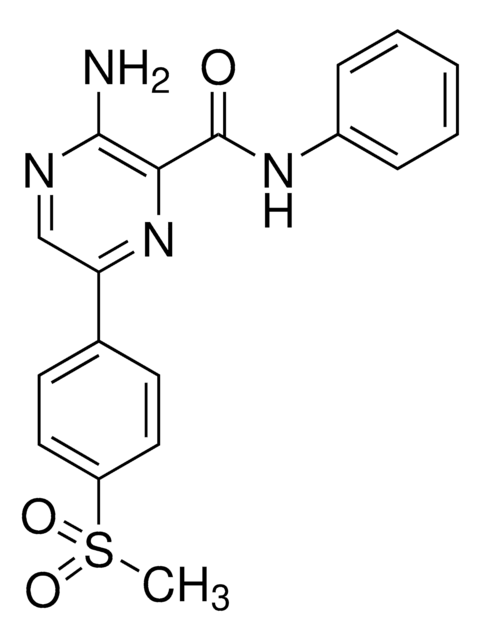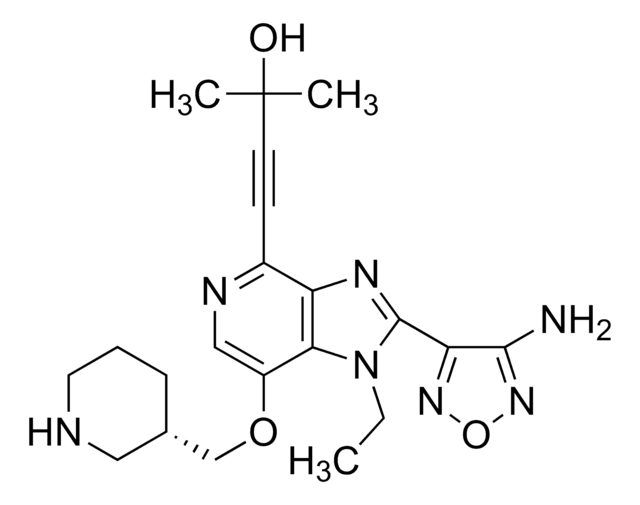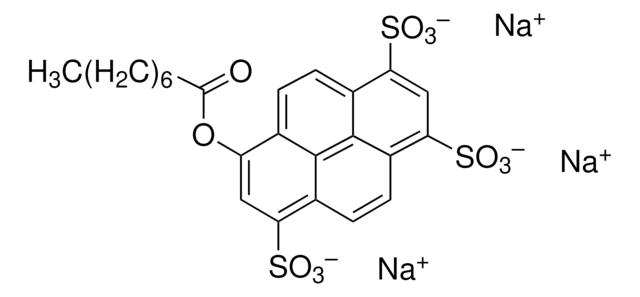178501
Palmostatin B
≥95% (HPLC), solid, APT1 inhibitor, Calbiochem®
Sinônimo(s):
APT1 Inhibitor, palmostatin B, APT1 Inhibitor
About This Item
Produtos recomendados
Nome do produto
APT1 Inhibitor, palmostatin B, The APT1 Inhibitor, palmostatin B controls the biological activity of APT1.
Nível de qualidade
Ensaio
≥95% (HPLC)
Formulário
solid
fabricante/nome comercial
Calbiochem®
condição de armazenamento
OK to freeze
protect from light
cor
off-white
solubilidade
DMSO: 100 mg/mL
Condições de expedição
wet ice
temperatura de armazenamento
−20°C
Descrição geral
Embalagem
Advertência
Outras notas
Dekker, F., et al. 2010. Nat. Chem. Biol.6, 449.
Informações legais
Código de classe de armazenamento
11 - Combustible Solids
Classe de risco de água (WGK)
WGK 2
Ponto de fulgor (°F)
Not applicable
Ponto de fulgor (°C)
Not applicable
Certificados de análise (COA)
Busque Certificados de análise (COA) digitando o Número do Lote do produto. Os números de lote e remessa podem ser encontrados no rótulo de um produto após a palavra “Lot” ou “Batch”.
Já possui este produto?
Encontre a documentação dos produtos que você adquiriu recentemente na biblioteca de documentos.
Os clientes também visualizaram
Nossa equipe de cientistas tem experiência em todas as áreas de pesquisa, incluindo Life Sciences, ciência de materiais, síntese química, cromatografia, química analítica e muitas outras.
Entre em contato com a assistência técnica
